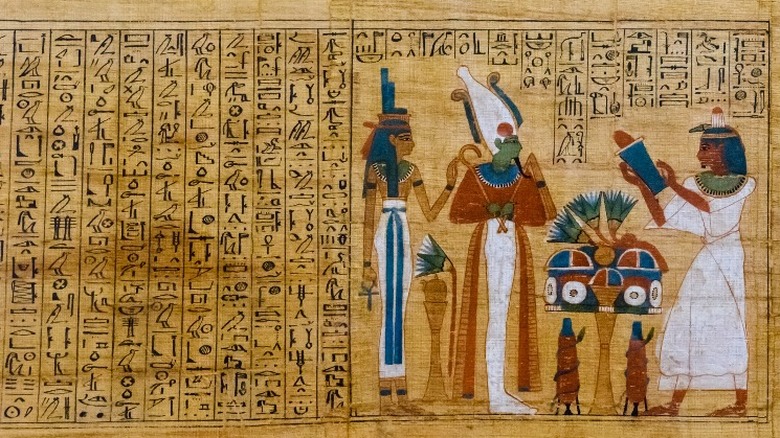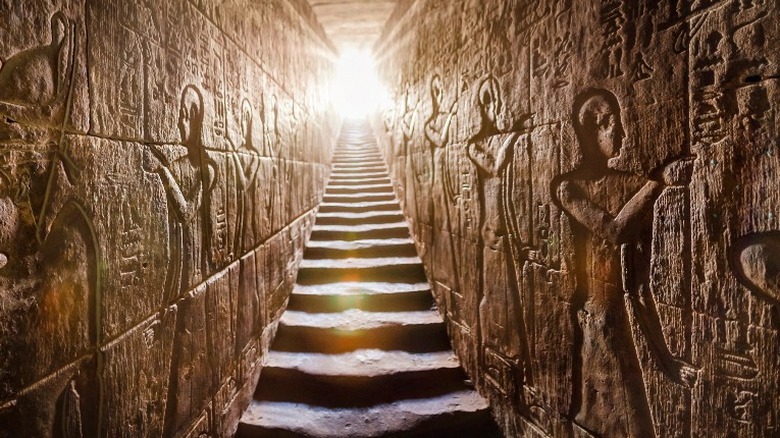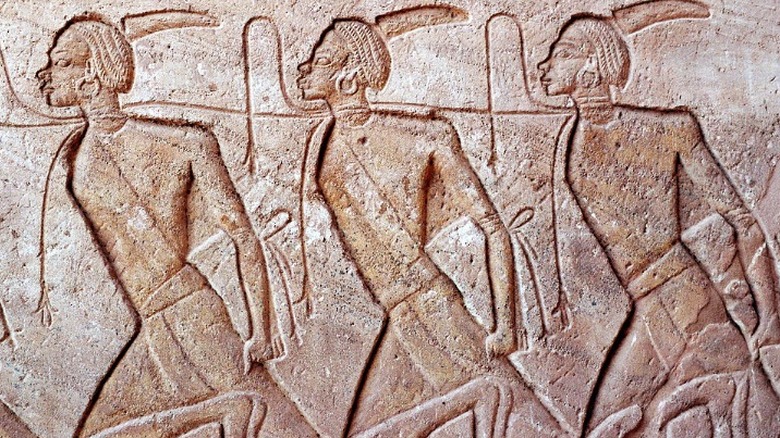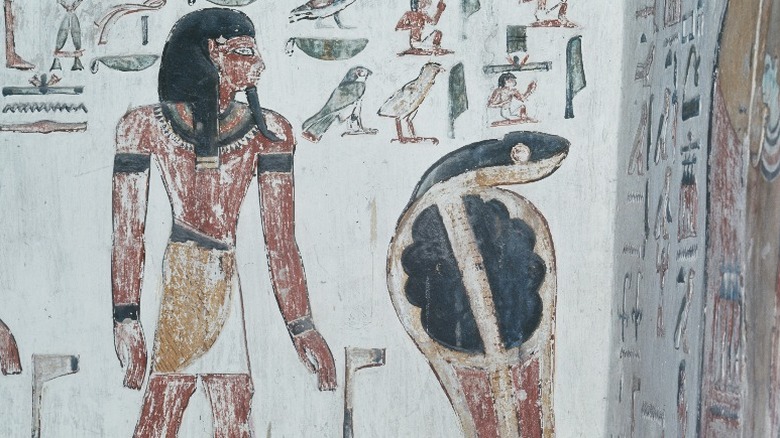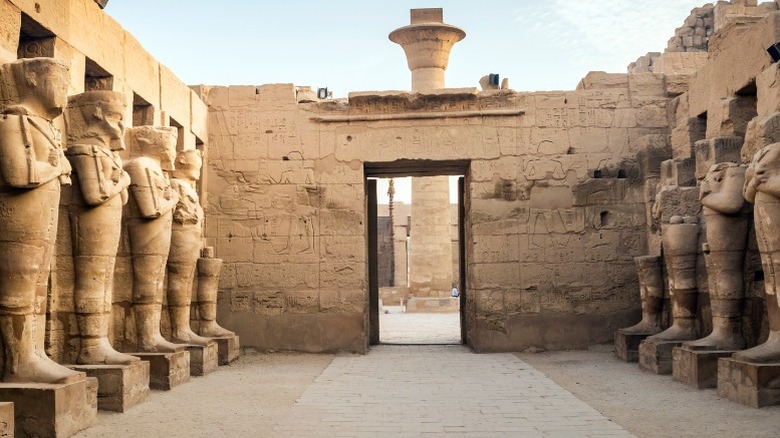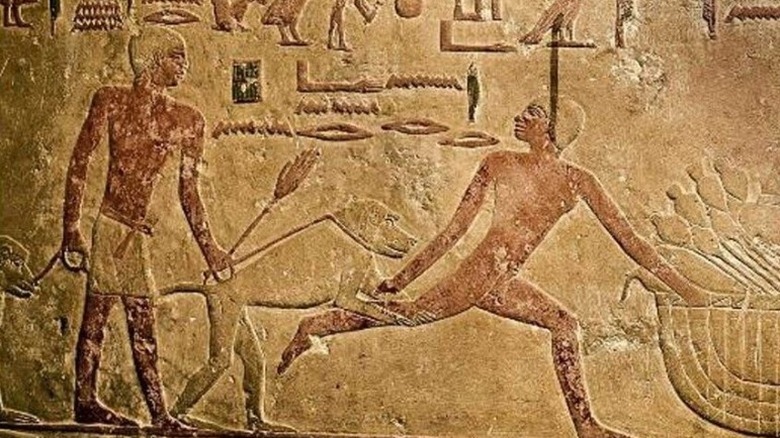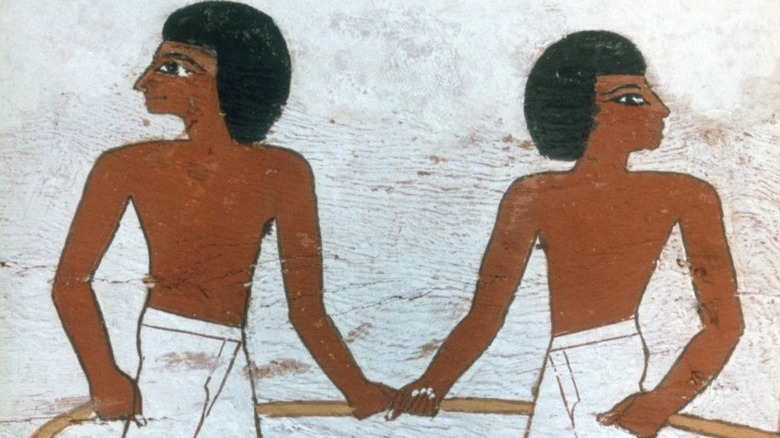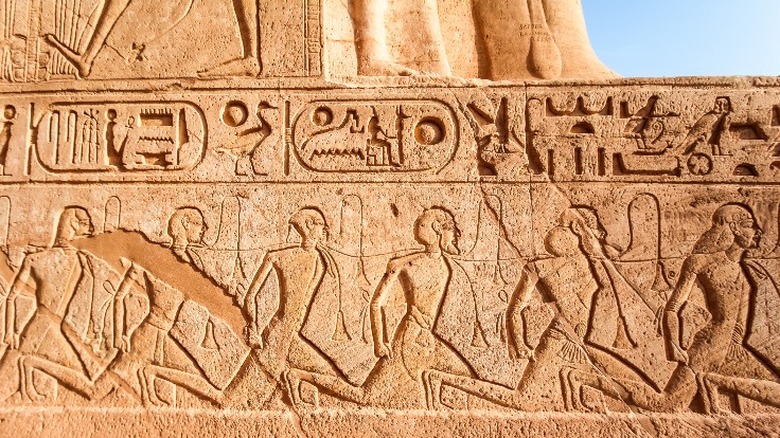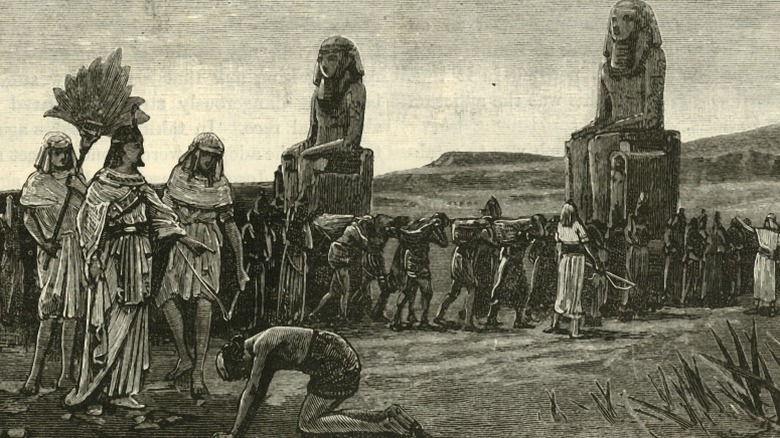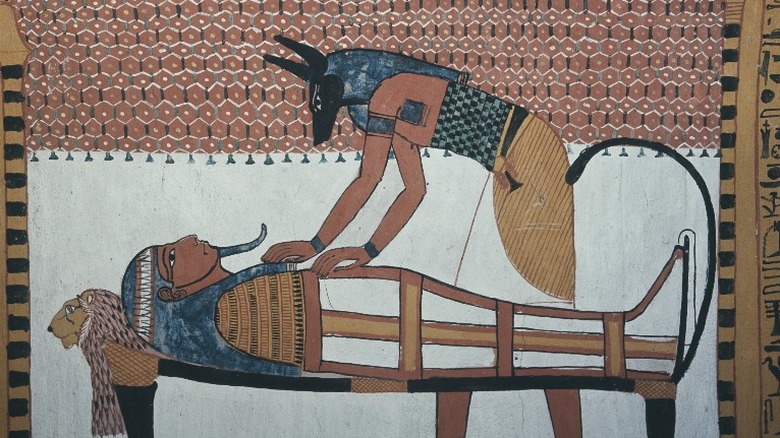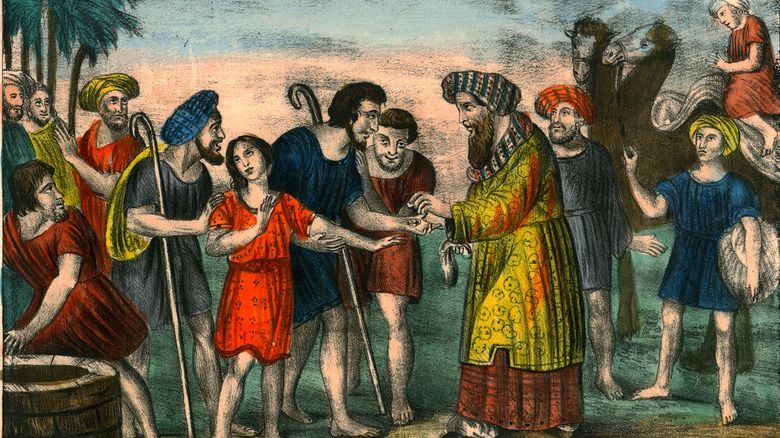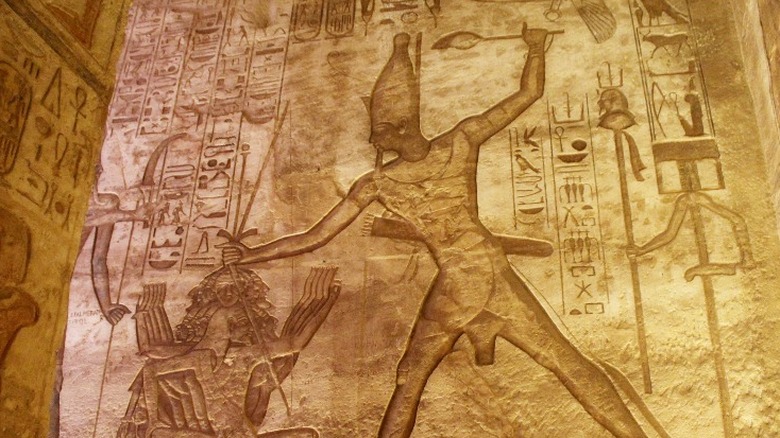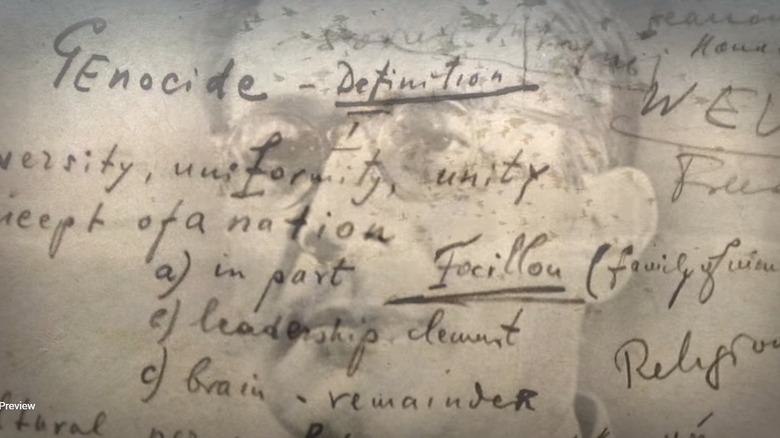
Here’s What It Was Like For Criminals In Ancient Egypt
There’s plenty of material and evidence from ancient Egypt that give modern-day scholars an insight into what life was like during that time. From cryptic hieroglyphs to detailed paintings, enormous amounts of archeological information has been uncovered that offers a picture of everyday life in ancient history. But what can all these findings tell historians about ancient Egyptian criminals?
According to World History Encyclopedia, as early as the Predynastic Period in ancient Egypt, laws were introduced to minimize crime, while punishments for breaking the law were usually immediate. With such quick-serving disciplines, prison sentences for criminals were not that common — as opposed to modern-day judicial systems. Instead, convicted criminals in ancient Egypt often suffered barbaric punishments as a way of distinguishing a criminal from an ordinary person in the community. For reference, punishments for severe crimes in ancient Egypt varied from slavery to death, whereas mutilation and whipping were considered punishments for lesser offenses, as noted in Britannica. These fierce laws were common in antiquity and are similar to the ancient Mesopotamian laws recorded in the Code of Hammurabi.
While studying the treatment of criminals in ancient Egypt, the striking brutality and inhumane punishments give historians an insight into the life of ordinary people in society as opposed to the opulent lives of the pharaohs. So, what do Egyptologists have to say about criminals in ancient Egypt, and what does evidence suggest about how they were treated?
Ancient Egyptian laws were intended to minimize criminal activity
In ancient Egypt, laws helped the pharaoh control society by promoting justice and order while reducing offenses by potential criminals. These laws were created on a regional and national level, while an imperial court made the final decision on whether or not a law was legally binding, according to World History Encyclopedia.
As early as 6000 to 3150 B.C.E., simple laws and legislations were composed in Egypt and continued until Rome occupied the land in 30 B.C.E. Laws in ancient Egypt were based on the principle of “ma’at” or “harmony,” which originated from the gods, according to World History Encyclopedia. In order to lessen crime, the general people were taught to focus their attention on being harmonious in society, as well as being mindful and considerate of others. This standard of living acted as a moral guidance system for the ancient Egyptians, as well as a tactic to combat crime.
Since ancient Egyptian laws were built on the foundation of a divine principle, World History Encyclopedia notes that one was guilty until proven innocent. Offenders often received harsh punishments. For example, Egyptians viewed a stable family as a necessity for a stable community, so infidelity was judged as a severe transgression. If a woman had an affair, her husband could forgive her and move on, or he could prosecute. If he decided to prosecute and his wife was proven guilty, she could be forced to divorce, have her nose amputated, or be burned alive.
Egyptians favored immediate punishment over prisons
While criminals in ancient Egypt certainly existed, there is little evidence of actual prisons. Instead, there are accounts of immediate punishments — such as flogging, mutilation, and death — and all the sentences were decided by the vizier. According to World History Encyclopedia, a vizier in ancient Egypt was one of the most influential people after the pharaoh. This person was similar to a prime minister and supervised the government, including how criminals were disciplined. Ancient Egyptian criminals faced two kinds of judicial trials. The first was in a court with witnesses, as noted in Britannica, and the second was in the underworld in front of the god, Osiris, who determined a person’s final judgment, according to Encyclopedia.
As noted by National Geographic, there were two types of crimes in ancient Egypt that a prisoner could be tried and convicted — crimes against the people such as murder, adultery, or theft, and crimes against the state such as treason, theft of public property, and any violation of religious institutions.
National Geographic also notes the lack of prisons in ancient Egypt. Convictions were often administered through forced labor, or offenders were threatened with exile to Nubia (modern-day northern Sudan). According to World History Encyclopedia, many criminals were enslaved, and History notes that slaves were mostly used as farming laborers and domestic servers.
Archaeological evidence shows various depictions of ancient Egyptian prisoners
There are many visuals of prisoners in ancient Egypt that offer a vivid account of the cruel treatment of those who were arrested. Some of these portrayals are recorded on paintings and carvings while others are characterized as figurines.
Depictions of criminals in ancient Egypt show those who have been arrested with their arms bound behind their backs while a rope around their necks links them with other prisoners (via Western Australian Museum). These ancient carvings may suggest that these prisoners were being transported — perhaps to be sold into slavery or to meet their fate by amputation or death.
As well as the many carvings portraying ancient prisoners, there are also figurines of prisoners bound by their elbows, paintings of guards beating a felon, and illustrations depicting the moments before a brutal execution. While these images tell historians what life may have been like for a prisoner in antiquity, it’s important to note that prisoners were not always guilty of a crime, but rather, used for servitude. Therefore, not all prisoners were criminals, and the story behind one image of a prisoner may not be the same for another.
Criminals were tried and investigated in a court system
According to World History Encyclopedia, it wasn’t until the Middle Kingdom, c. 2050 to 1800 B.C.E., that designated judges were hired to manage the judicial system and appear in court to question a suspect. Before this structured and familiar legal practice, judges were often religious priests who consulted their god for a verdict as opposed to reviewing testimonies and coming to a conclusion that way. The pharaoh was usually the final say in punishments for heinous crimes, but in some cases, he appointed trusted staff to make final judgments on a prisoner or potential convict.
When a suspect was on trial in a criminal case, the pharaoh looked to trusted staff such as the vizier, governors, and legal officials to make judicial decisions when investigating a crime, as noted in Britannica. This inquest was often followed by a court case, but both the defendant and plaintiff did not have legal representation, which is a crucial component in understanding ancient Egyptian criminal cases. Both parties represented themselves in a hearing with witnesses and a jury present, depending on the case. Witnesses were often beaten to ensure their honesty, since Egyptians believed guilt before proven innocence. Notably, women in ancient Egypt were also permitted to testify as witnesses in court, as well as serve on juries, according to History.
Police were introduced to arrest and monitor suspects of a crime
Similar to today, laws in ancient Egypt were put in place to establish order in society, and eventually, the occupation of police was introduced to enforce these laws upon ancient Egyptian civilians. In the interest of preventing crime and keeping the peace, the first police officers were introduced during the period of the Middle Kingdom, around 2050 to 1800 B.C.E. Their role was to manage prisoners and maintain control and order among communities. The most common crime that police were tasked with in ancient Egypt was minimizing was the frequent tomb robbing in which criminals would steal the valuable gold and jewels from the tombs of royal family members and other civilians.
As well as enforcing the law and catching criminals, ancient Egyptian police officers were also responsible for taking suspects into custody, according to World History Encyclopedia. Once prisoners were arrested, they were quizzed and investigated by police officers and then sent to court. Much like today, these members of the police also provided their own testimony during court cases.
With the decline of the Egyptian Empire, World History Encyclopedia notes that these very same police forces became corrupt, often falsely accusing suspects. Once the alleged criminals were convicted and sentenced, the police “took whatever they wanted from the suspect’s possessions.”
Baboons were trained to catch criminals
Almost everything that historians can tell about ancient Egypt can be found in the many tell-tale visuals that the ancients left behind. One of the most striking depictions of policing during this period is seen in an image of a baboon seizing a criminal, as per The Archaeologist. In this portrayal, the baboon is seen with a leash around its neck while a man — presumably a police officer — supervises the baboon in his mission to catch the criminal. This painting suggests that the ancient Egyptians trained their animals to perform law-enforcing tasks and act as a sort of ancient bounty hunter. In order to detain the thief, the baboon in this visual is seen pulling on the criminal’s leg, who is depicted as having one hand in a basket of goods attempting to steal.
In this illustration, the police officer is also clutching the leash of another baboon which suggests the important role that a team of baboons had in law enforcement as well as how trusted they were by the ancient Egyptians. At just a glance, the depiction of police baboons is comparable with modern-day police dogs that work alongside police officers in their effort to track down criminals.
Criminals were forced to endure harsh working conditions
As a form of punishment, enslaved criminals in ancient Egypt were forced to spend day after day in the desert heat mining in the granite quarries, according to “The Treatment of Criminals in Ancient Egypt: Through the New Kingdom” (via JSTOR). This grueling job required intense muscle power and strenuous effort that would have certainly risked serious, if not fatal, injuries. The construction of the pyramids is an example of the harsh working conditions carried out by ancient Egyptian criminals.
Although popular belief assumes enslaved people built the pyramids, many historians argue that the pyramids were actually built by a multitude of skilled craftsmen, as noted in National Geographic. However, enslaved criminals did play a major role in the construction of these monumental buildings that was even more demanding than actually building the pyramids.
Ancient Egyptian criminals were considered “permanent crew” when manufacturing the pyramids and had the back-breaking task of cutting the millions of stone blocks out of the rock cliffs, according to World History Encyclopedia. For context, a total of 2,300,000 blocks of stone were quarried to build the Great Pyramid of Giza, which illustrates the harsh consequences of being criminalized in ancient Egypt. Furthermore, the paid craftsmen who constructed the pyramids only worked on this project for two months out of the year as opposed to the prisoners who didn’t get a day off. With such a sizable and in-demand workforce required to mine the stone blocks, it’s clear why criminals and prisoners were used as laborers rather than simply locked away in confinement.
Public humiliation and false witness
According to World History Encyclopedia, even if found innocent, once a suspect was charged with committing a crime, their names would still be put on record as a suspect involved in a dispute or violation and thus forever suffer a tarnished reputation. Due to this potential public embarrassment, the punishments for a false witness were subsequently merciless. One could argue that the law empathized with a suspect’s tainted reputation by implementing such harsh punishments for lying witnesses.
A false witness could expect punishments ranging from amputation to drowning. It’s assumed that every attempt was made to make sure that the evidence was correct before sentencing someone, since harsh punishments were cast down for the most serious crimes. For example, men convicted of sexual assault had their genitals removed, whereas murderers were burned alive or beaten up and fed to crocodiles (via World History Encyclopedia).
On particular pharaoh punished criminals on a fair basis
Not all criminals in ancient Egypt were barbarically punished, and some actually benefited from a more just system. One pharaoh, Bocchoris, was focused on establishing laws that protected the individual and promoted a just punishment system that was fair for convicts, according to Britannica. For this particular pharaoh, it was important that civilians were morally and decently judged for their criminal behaviors, which meant that the defendant’s rights were protected by the law as well.
Bocchoris’ laws supported fundamental human rights and influenced other leaders in terms of criminal punishments. He removed imprisonment for those who had debt and improved laws relating to the transfer of assets, such as property. Bocchoris’ legal reforms even inspired ancient Greek lawmakers. When the Greek statesman and lawgiver Solon visited Egypt in the sixth century B.C.E., he implemented features of the Egyptian legal system into his own constitutional plans for Athens, which then influenced Rome, which influenced modern-day laws.
The gods played a part in how criminals were disciplined
Although Pharaoh ruled the land, the gods ruled Pharaoh. According to the ancient Egyptians, the gods controlled weather, crops, livelihood, health, and ultimately determined the fate of all Egyptian people. Therefore, it was important for the ancient Egyptians not to step out of line lest the gods punished them for it. Additionally, priests often conferred with the gods to reach a verdict on a suspect rather than rationally measuring the evidence and testimonies in a criminal investigation, according to World History Encyclopedia.
Moreover, the ancient Egyptian gods held the highest authority for the punishment of a crime. For example, Maahes was a god responsible for punishments of those who spoiled the natural and divine order of life and revealed the guilt and error of criminals in society. On the other hand, the Egyptian goddess Meretseger sheltered communities from criminals by penalizing the wicked with snakebites or blindness.
As opposed to only being punished on earth, once an ancient Egyptian criminal died and transitioned into the afterlife, their crimes were judged by the gods and their hearts were weighed. If they carried a heavy heart, it would be fed to a hungry, vicious creature. This possibility was a tremendous fear for the ancient Egyptians in general but would have also served as a reminder to criminals that the justice for their crimes didn’t just end here on earth.
The Book of Genesis offers a glimpse into how criminals were treated
From a historical standpoint, the Old Testament is a window into the cultural context of that time. In terms of ancient Egyptian criminals, the Book of Genesis tells the story of Joseph, who was locked away in a dungeon for allegedly trying to seduce the wife of the captain of the pharaoh’s guard. According to Genesis 39:20, “Joseph’s master took him and put him in prison, the place where the king’s prisoners were confined.” In this account, there is also a mention of a prison warden that gives researchers an idea of how prisons were monitored.
There is also a reference to a hierarchy among prisoners, as Joseph is put in charge of his fellow inmates. “So the warden put Joseph in charge of all those held in the prison, and he was made responsible for all that was done there,” reads Genesis 39:22. These descriptions tell historians how prison systems may have been operated at that time, making the Bible an important historical text rather than just a religious scripture. The Book of Genesis offers an image of ancient Egyptian prisons, as well as the injustices that prisoners endured under Egyptian rule. “I was forcibly carried off from the land of the Hebrews, and even here I have done nothing to deserve being put in a dungeon,” said Joseph in Genesis 40:15.
The ancient legend of Rhinocolura describes a city of nose-less criminals
According to The Historian’s Hut, old tales from the ancient writers Strabo and Diodorus Siculus reference a city known as Rhinocolura located in present-day El-Arish, over 200 miles from Cairo, Egypt, that was full of nose-less criminals. In these legends, people who were guilty of a crime did escape death but did not escape punishment and were sent to this penal colony. Not only were these ancient Egyptian criminals forced into exile, but they allegedly had their noses amputated so that they could be distinguished as “criminals.” The city was associated with its signature population, and so the name Rhinocolura, meaning “clipped nose,” remained.
Ancient Origins reports the criminals were men who had been found guilty of stealing. Evidently, a criminal’s decedent would have not suffered the genetic repercussions of their parent’s mutilation, so the distinct features of these people would have eventually phased out. Otorhinolaryngologica Italica notes that amputation of the nose was an appropriate legal punishment in some ancient civilizations.
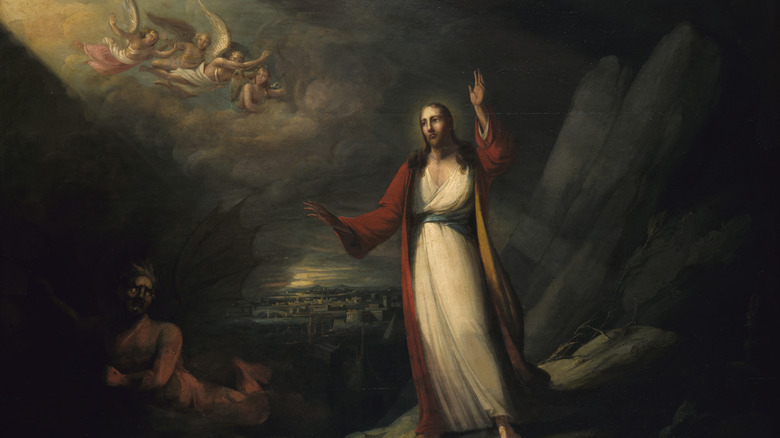
The Temptation Of Christ Explained

How Accurate Are The Portrayals Of Nunchucks In Movies?
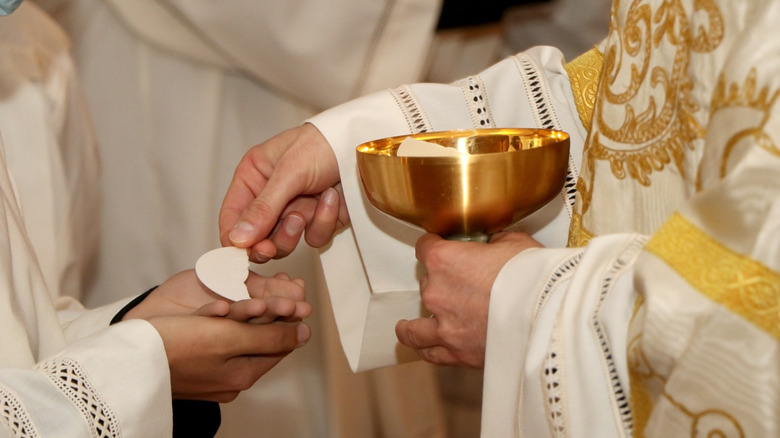
What You Might Not Know About The Roman Catholic Secret Society
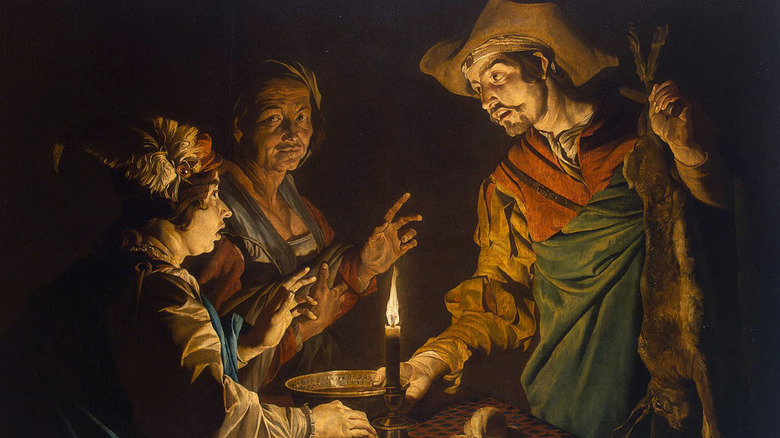
What Esau Really Looked Like According To The Bible
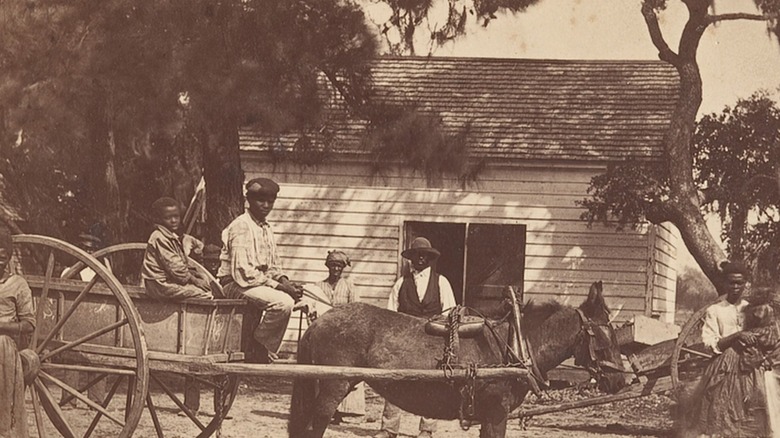
The Messed Up Truth Of Life On A Plantation

How A Broke Businessman Took The Monte Carlo Casino For Millions Using Math

The Deadliest Earthquake In History That No One Talks About
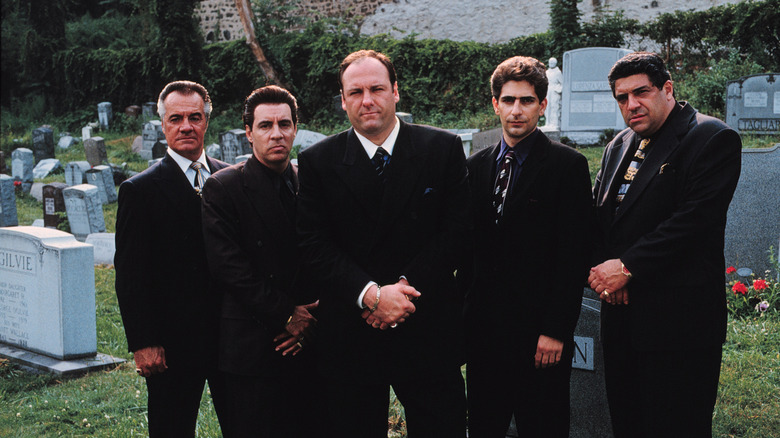
The True Story Behind The Mobster Who Inspired The Sopranos

The Sad Discovery Made In Poltergeist Star Heather O'Rourke's Autopsy Report

What Happens When No One Claims A Dead Body?
